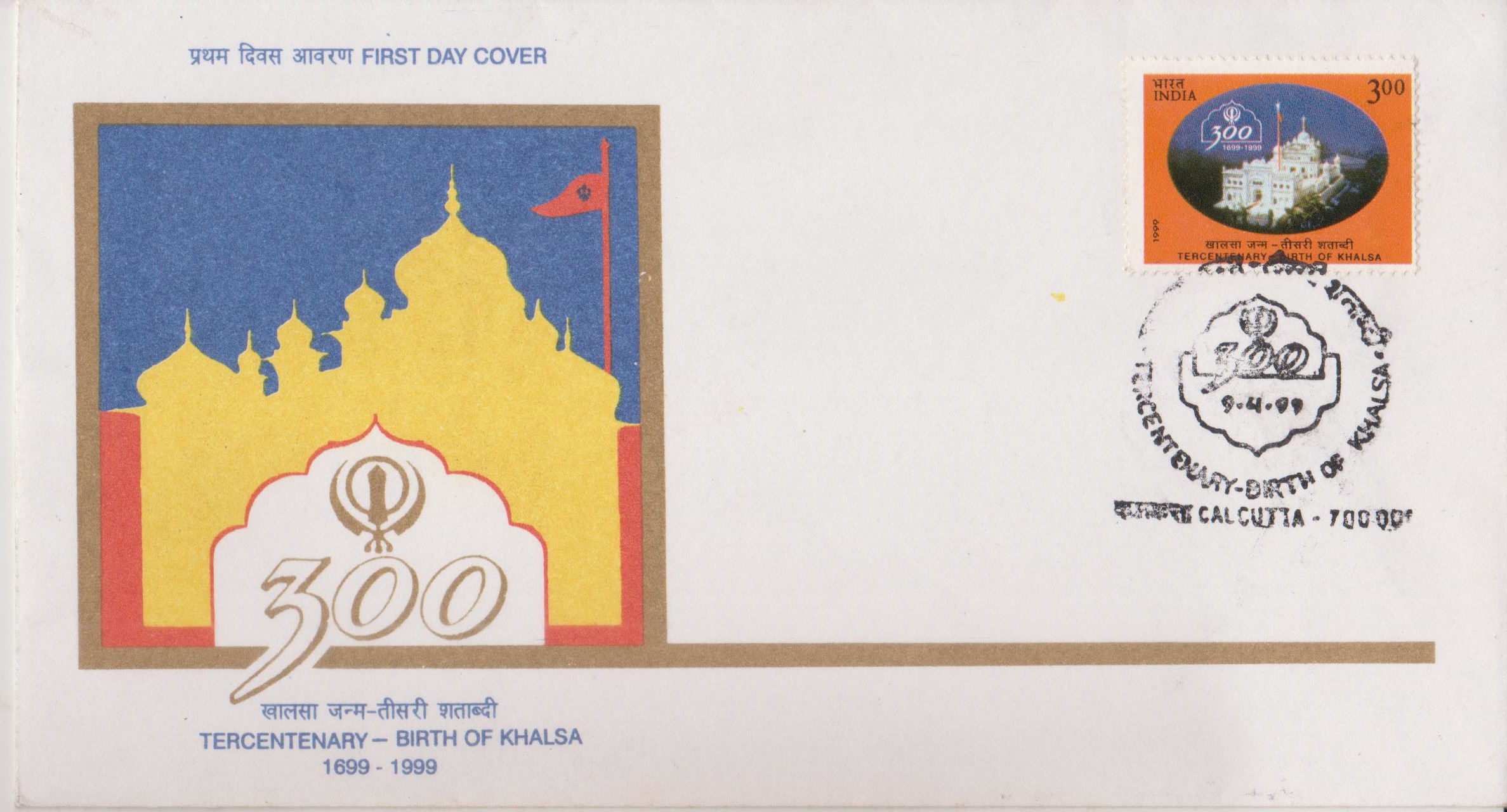
The Khalsa Panth
A commemorative postage stamp on the Tercentenary of the Birth of Khalsa, a group of Sikh warriors, initiated by Guru Gobind Singh in 1699, a key event in history of Sikhism :
Issued on Apr 9, 1999
Issued for : The Department of Posts feels privileged to issue this stamp commemorating the tercentenary of the Khalsa.
Credits :
Stamp : Based on material supplied by the sponsors.
FDC & Cancellation : Alka Sharma
Type : Stamp, Postal Used
Colour : Multi Colour
Denomination : 300 Paise
Overall size : 3.91 x 2.90 Cms.
Printing size : 3.55 x 2.54 Cms.
Perforation : 13 x 13
Paper : Imported unwatermarked Adhesive Gravure Coated Stamp Paper in Sheets 50.8 x 53.5 cms.
Stamps Printed : 1.5 Million
Number per issue sheet : 35
Printing Process : Photogravure
Printer : India Security Press, Nashik
About :
- Sikhism, one of the youngest religions of the world, was founded by Guru Nanak in 1469. Guru Nanak was followed by nine spiritual successors who spread the message of universal love, peace, harmony and morality. However, the dynamic movement set forth by them for the spiritual reconstruction and moral regeneration incited strong hostility of some native feudal lords and protagonists of the caste system.
- During the times of Guru Gobind Singh, the forces of tyranny, injustice and oppression became so aggressive that it was imperative to combat them and protect the oppressed from ruthless onslaughts on their freedom. In order to accomplish this the Guru decided to raise an army of self-sacrificing saint soldiers. The Guru chose Baisakhi Day of 1699 to introduce the Khalsa identity in an inspiring and spectacular manner.
- The Guru summoned his followers from all over India to assemble at Fort Kesgarh in Anandpur Sahib (Punjab) for celebrating the annual Baisakhi festival. Addressing the vast congregation of about eighty thousand, he suddenly unsheathed his sword and demanded one after the other five heads as a sacrifice for the sake of “Dharma“. Out of the five who offered their heads, four belonged to the suppressed classes and came from distant places like Bidar in the South and Jagannath Puri in the East. He initiated them in a novel manner, using a steel bowl, and a double-edged broadsword for preparing the sacred nectar for initiation. Initiating them into a new casteless society, designating it as the Khalsa Panth, he called them God’s Elect, his Five Beloved Ones, and the nucleus of the New Order. In order to ensure that they remain distinguished from the rest of the world, he surnamed them with a common appellation – Singh (lion) – and prescribed a common uniform consisting of five defining emblems which gave the Khalsa a distinct identity. He exhorted them to live up to the highest moral and ethical standards and be always prepared to fight tyranny, oppression and injustice.
- The Guru then stood up before the five and besought to be initiated into the Khalsa order. After being so initiated, he pronounced, “From now on the Khalsa is the Guru, and the Guru is the Khalsa“. This epoch-making event marked the beginning of the rise of people who would fight all oppression and tyranny. It brought about a revolutionary change in men’s minds and aroused their dormant energies towards positive, constructive and altruistic purposes. It also resulted in many acts of bold sacrifices and gallantry. In later eras it contributed significantly to the fight for freedom of India from the British rule, to the strengthening of India‘s unity and solidarity after independence and to the welfare of all mankind for whom the entire Sikh community supplicates daily in its congregational prayer “Sarbat da bhala“.
- Text : Based on material supplied by the sponsors.


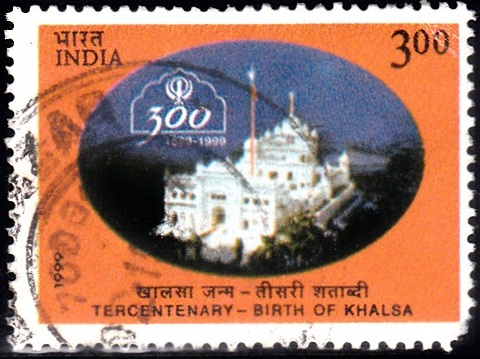
 Issued by
Issued by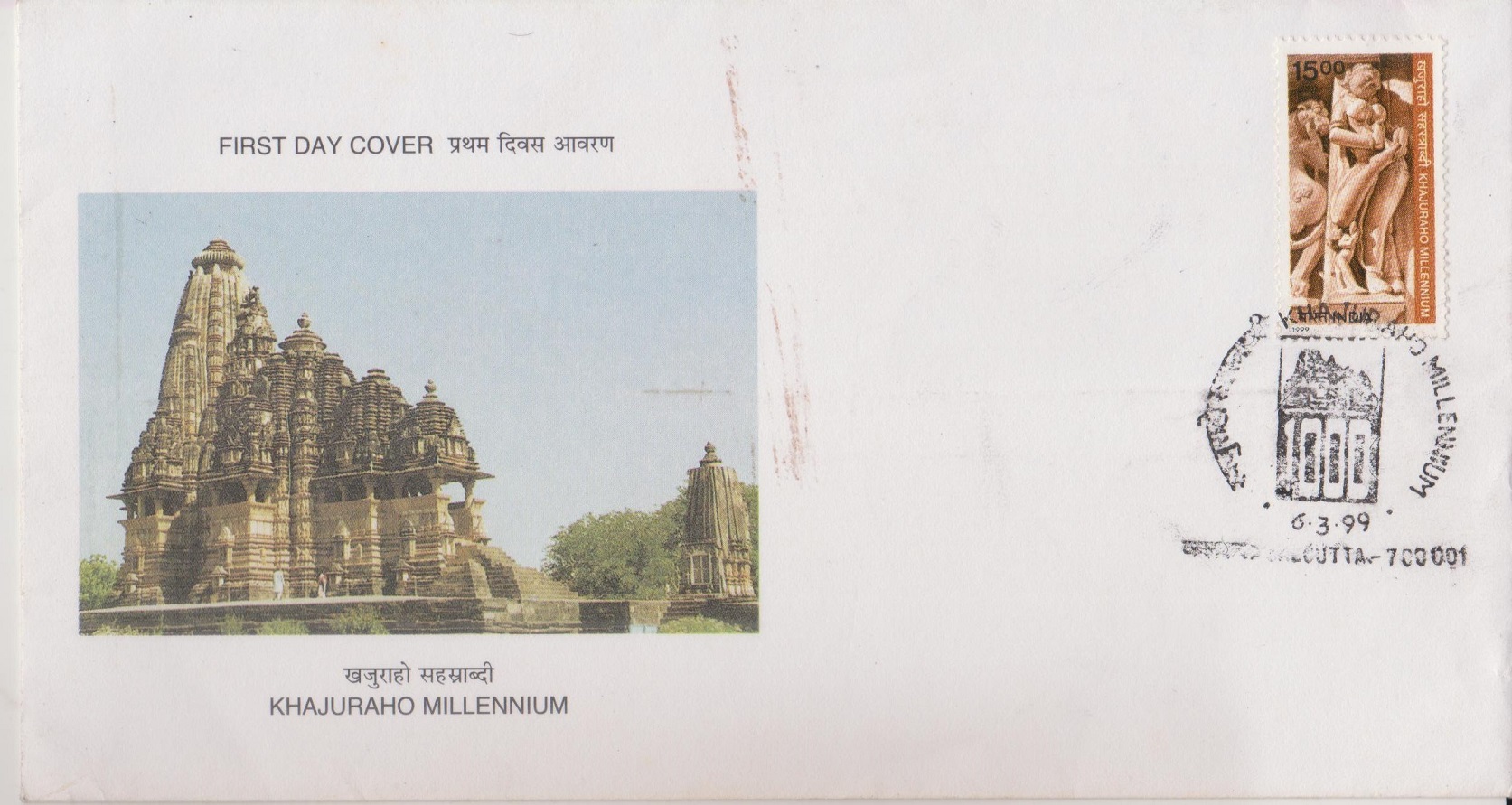
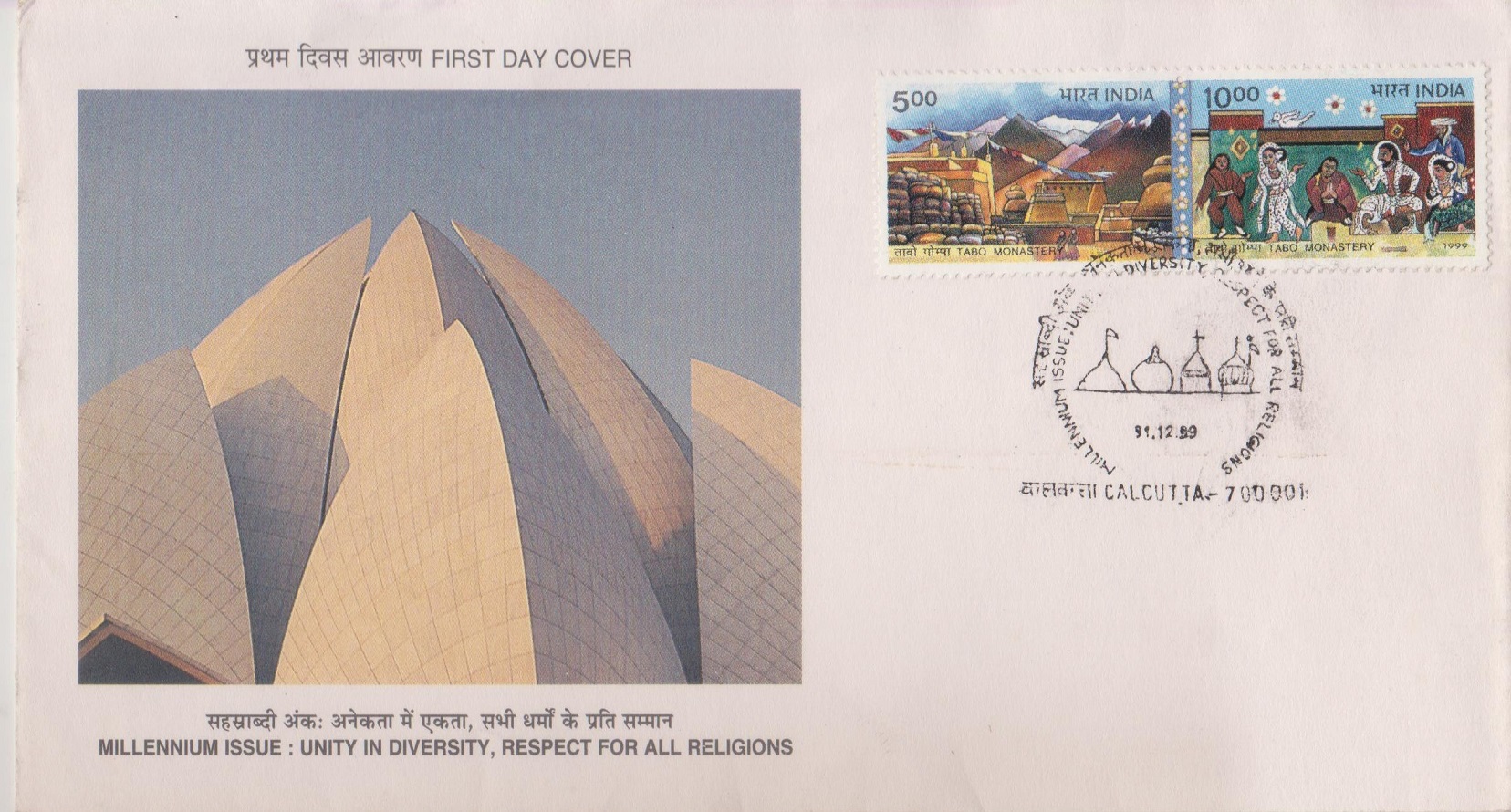
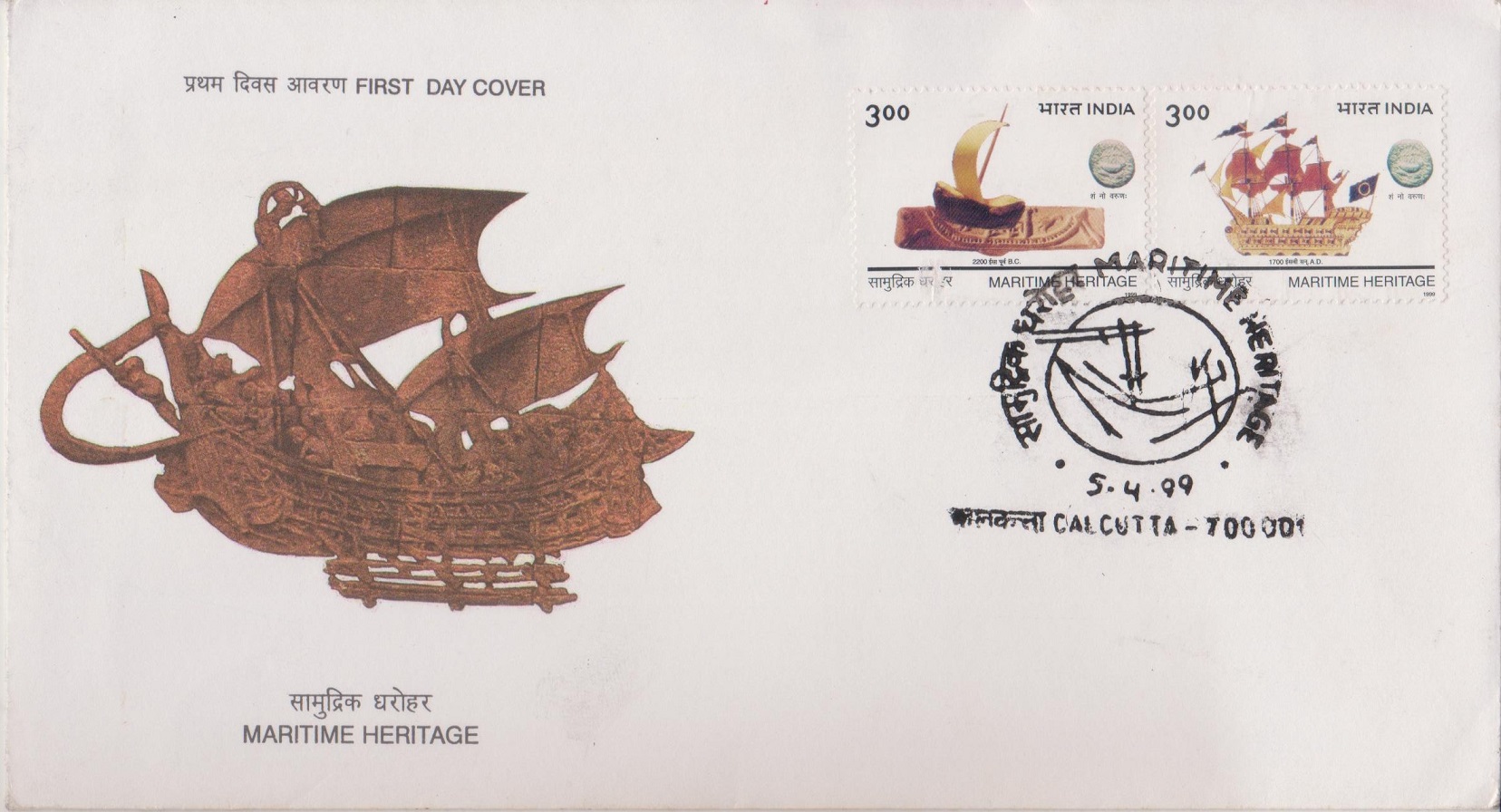
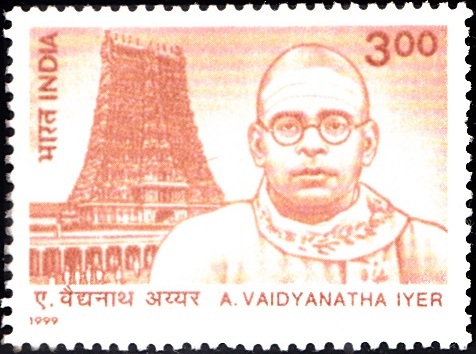
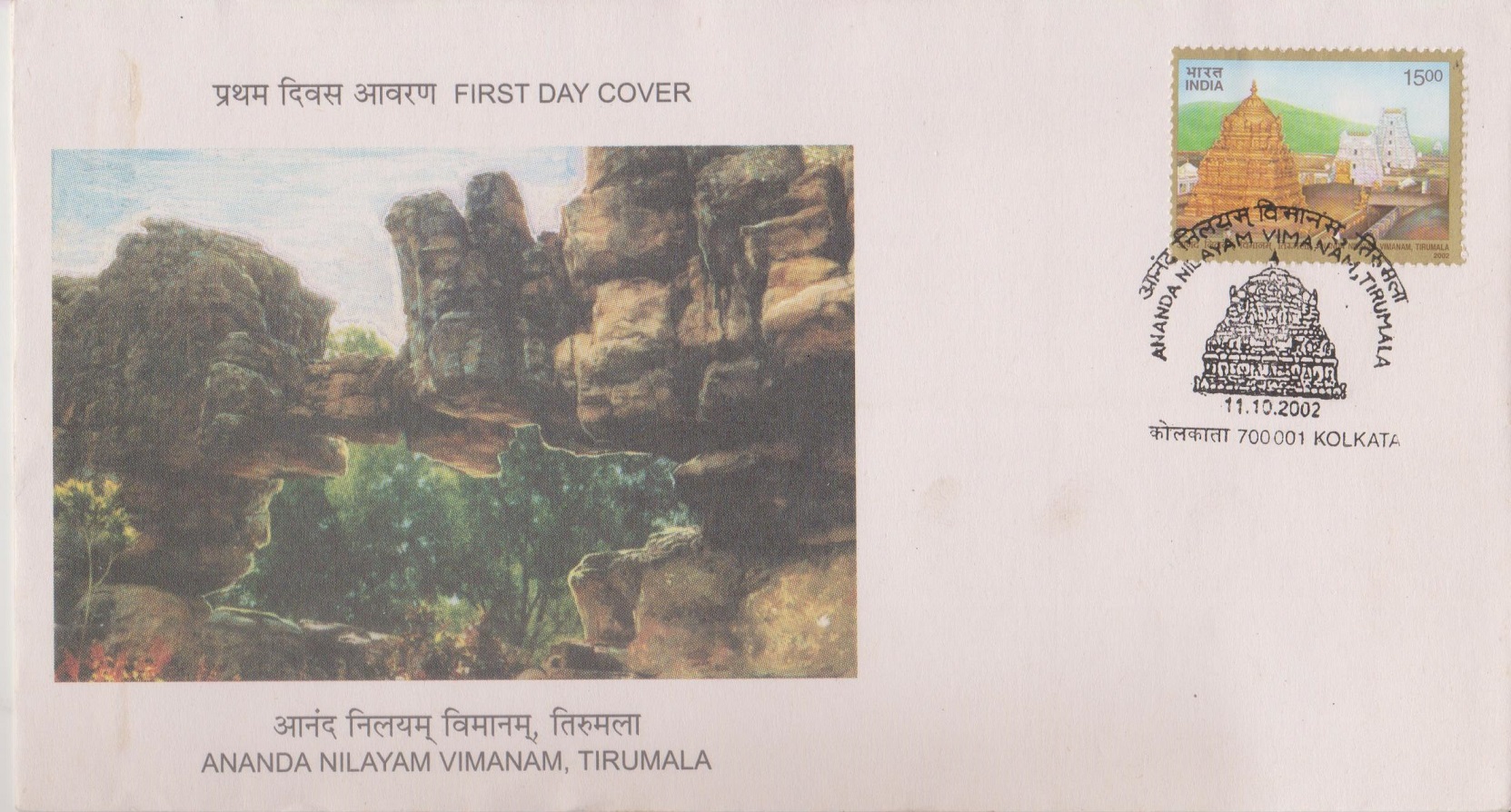
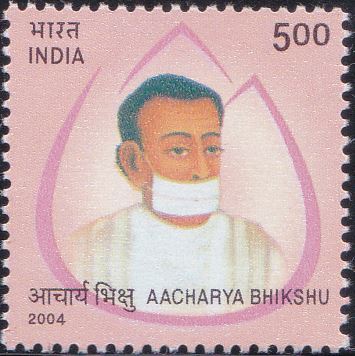
[…] joined the ranks of the Khalsa at the tender age of ten and rose from a Khidmatgar to Sardar at the Court of Maharaja Ranjit Singh […]
[…] of men and women received the baptism of the sword at his hand. In his new order – the Khalsa – he abolished caste and customs, old rituals and outmoded beliefs. He proclaimed complete […]
[…] identity. It is worn to cover the long, uncut hair that is one of the five outward symbols of the Khalsa Sikh […]
[…] of his people. Money and position had no allurement for him at any time and his dedication to the Khalsa Panth was unconditional. He was basically a religious man but circumstances involved him in active […]
[…] joined the ranks of the Khalsa at the tender age of ten and rose from a Khidmatgar to Sardar at the Court of Maharaja Ranjit Singh […]
[…] started his education from Khanna in Punjab and joined Lahore‘s Khalsa High School. He performed “sewa“ in Gurdwara Dera Sahib and Gurdwara Shahid Ganj of […]
[…] of Abdul Hayee. He was born on 8th March, 1921 at Ludhiana. Sahir had his early education at Khalsa High School, Ludhiana and later joined the Government College, Ludhiana. While at college, Sahir […]
[…] Gobind Singh, subsequently being instrumental in paving the way for establishing the Order of Khalsa in […]
[…] of men and women received the baptism of the sword at his hand. In his new order – the Khalsa – he abolished caste and customs, old rituals and outmoded beliefs. He proclaimed complete […]
[…] his father Nihal Singh was also a pioneer of women’s education. While still a student of the Khalsa College at Amritsar, Pratap Singh Kairon left home for the United States of America. There he had […]
[…] Gobind Singh created the Panj Pyare and became the first to request initiation by them into the Khalsa. The creation of the Khalsa created a sense of unity among the Sikhs and their supporters. He […]